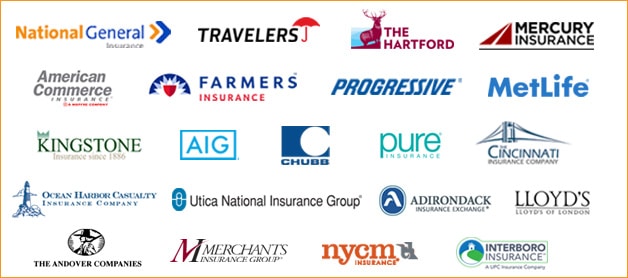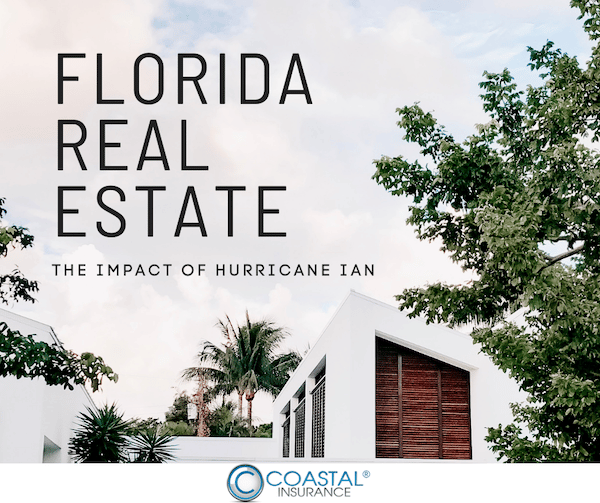Brooklyn Homeowners Insurance
Get 10 FREE QUOTES from Top Rated Insurance Companies
Compare prices and start saving today!
From Long Island to Brooklyn to Queens to Staten Island to Upstate New York, Coastal Insurance has rates that can save you money. Why waste time calling different brokers? We take care of the shopping for you!
What is Insured
Provides protection for the dwelling on an all risks basis up to the policy limits. The policy limit is set by the policyowner at the time the insurance is purchased. You can choose to insure your home and belongings for either replacement cost or actual cash value. The home should be insured for replacement cost. Replacement cost is the amount it would take to replace or rebuild your home or repair damages with materials of similar kind and quality, without deducting for depreciation. Depreciation is the decrease in home or property value from the time it was first built or purchased because of age or wear. Actual cash value is the amount it would take to repair or replace damage to your home after depreciation. Most insurers require homeowners to insure their homes for at least 80 percent of the replacement cost. If you insure for less than 80 percent of the replacement cost of your home, any loss payment from your insurance company will be subject to a coinsurance penalty. You may wish to insure at 100 percent of replacement cost so you will have sufficient coverage in the event of total loss.
Take a look at some different Homeowners Insurance Coverage plans:
- Homeowners Insurance – Coverage B – Other Structures: Provides protection for unattached structures such as tool sheds, detached garages, houses and their contents. Coverage B is usually equal to 10 percent of the policy limit on Coverage A.
- Homeowners Insurance – Coverage C – Personal Property: Provides protection for personal belongings. Items such as clothing, furniture and standard electronics are covered. Some policies may include credit card theft and away from home theft. The policy limit on Coverage C is equal to 50 percent of the policy limit on Coverage A. Most standard home insurance policies cover the contents of your home on an actual cash value basis. Many insurers offer an option to insure your belongings at replacement cost. The premium will be higher for this coverage but may be worthwhile. Some forms of personal property, such as, silverware, computers, guns, money, expensive antiques and jewelry, have limited coverage under the homeowner’s policy and may be added to the policy as an endorsement.
- Insurance Coverage D – Additional Living Expenses: If your home is damaged to the extent of being uninhabitable, this coverage will pay for the living expenses away from the home while repairs are being made. These expenses could include limited motel, restaurant and warehouse storage. The policy limit to Coverage D is equal to 20 percent of the policy limit on Coverage A.
- Insurance Coverage E – Personal Liability: This coverage protects you against a claim or lawsuit resulting from bodily injury or property damage to others caused by your negligence. For example, your dog bites someone, your child breaks a window or a friend or stranger hits his or her head on something. This coverage applies to you and all family members who live with you. The amount of coverage is determined by the policyowner at the time the policy is issued.
- Insurance Coverage F – Medical Payments to Others: Regardless of who is at fault, this coverage pays for the medical expenses for persons accidentally injured on your property.
Types of Insurance Policies
There are two types of policies: All Risks and Named Perils.
A Named Perils policy covers losses that are due to only those perils listed in the policy. The perils typically covered include fire, windstorm, hail, and other direct physical losses. An All Risks policy covers losses that are due to any peril except those specifically excluded in the policy. It is important to note the all risks policy provides broader protection than do Named Perils policies.
The five types of homeowner packages offered to owners of single family owner occupied homes are HO-1, HO-2, HO-3, HO-3 with HO15 and HO-8.
- HO-1 Basic Homeowner Insures your property against the following 11 basic Named Perils: fire/lightning, loss of property removed from premises endangered by fire or other perils, windstorm/hail, explosions, riot/civil unrest, aircraft, vehicles, smoke, vandalism/malicious mischief, theft, and breakage of glass constituting a part of the building.
- HO-2 Broad Basic Homeowner Insures your property against the 11 basic Named Perils in HO-1 plus 7 additional named perils: falling objects, collapse of roof due to weight of ice or snow or sleet, collapse of building(s) or any part thereof, bursting of steam/hot water system , leaking of plumbing or heating system, freezing of pipes, sudden and accidental damage from artificially generated currents to electrical appliances or devices or fixtures or wiring.
- HO-3 Special Extended Homeowner Provides for comprehensive coverage (All Risks) on your home and the 18 (HO-2) broad named perils coverage on your contents. This is the most popular of all homeowner policies.
- HO-3 with HO-15 Comprehensive Homeowner (All Risks) Covers your home and personal property for everything that is not specifically excluded. This policy usually provides the broadest all risks coverage available, but is not offered by all insurance companies.
- HO-8 Modified Homeowner Covers homes that have suffered extensive depreciation. Historical or architectural features may make the home more expensive than its market cost. This coverage is more restrictive much like HO-1 but is geared towards older homes.
Other Insurance Coverages
HO-6 Condominium Unit Homeowner Covers items not insured by the condominium association’s policy, such as, property damage to personal belongings, wall, floor and ceiling coverings, and any accessories not originally installed in the unit. An HO-6 policy is basically an HO-2 policy. It also provides additional coverage for personal property, loss of use, personal liability and medical payments.
HO-4 Renter’s Coverage Insures your household contents and personal belongings against the named perils in HO-2 policy. It also provides coverage for additional living expenses and includes personal liability protection.
Optional Insurance Coverages
You can purchase optional coverage to add to your policy. They are called endorsements or sometimes “floaters”. Some common endorsements include:
- Inflation Guard Endorsement Allows your insurance company to automatically change your policy limit. This is done to cover the replacement cost of your home that is increasing with inflation to maintain your coverage at 80% of replacement cost. Not all companies offer this endorsement.
- Guaranteed Dwelling Endorsement Covers the market value of your home. Often the market value is higher than the replacement cost.
- Guaranteed Contents Endorsement Covers the cost to replace a personal item even though you might have owned it for a number of years and it has depreciated in value.
- Other Structures Endorsement Covers larger more elaborate structures (gazebos, guest house etc.) that would exceed the standard 10% limit.
- Sewer and Drains Endorsement Covers damage to your finished or storage basement in the event of faulty sewer lines or drains. This is not covered by standard policies.
- Scheduled Personal Endorsement Sometimes called a “personal article floater” covers possessions such as jewelry, furs, stamps, coins, guns, computers, antiques, and other items that may exceed normal limits in a standard policy. Each item is valued, itemized and described. Excluded perils are listed. There is usually no deductible applied to this coverage.
- Blanket Endorsement Is used in place of a scheduled personal endorsement. There is no itemizing but the Blanket Endorsement covers what the standard policy does not cover such as jewelry, coins, etc..
- Increased Limits on Money and Securities Increases the coverage on money, bank notes, securities, deeds, etc..
- Secondary Residence Premises Endorsement Applies to a secondary residence.
- Home Daycare Endorsement Covers any liability claims if you operate a daycare in your home.
- Business Pursuits Endorsement Extends liability coverage if you operate an at-home sales business or other small “franchised” ventures such as Tupperware and Avon. It does not extend coverage if you own the business.
- Home Business Endorsement Extends liability coverage in your home if you own and operate a business in your home. It must be a small business.
- Personal Injury Endorsement Extends liability coverage to you if you are sued for Libel, Slander, and Defamation of Character. This is covered in umbrella policies and may not be needed. Income Property Endorsement Extends liability coverage to areas of your home or premise that you rent.
- Ordinance and Law Endorsement Extends coverage for additional costs of reconstructing your home under current codes. This usually applies to older homes.
- Watercraft Endorsement Extends personal liability and medical payments on small sailboats and outboard motor boats.
- Theft Coverage Protection Endorsement Extends theft protection to the contents of your motor vehicle, trailer or watercraft without proof of forced entry.
- Credit Card Forgery and Depositors Forgery Coverage Endorsement covers Covers the loss, theft or unauthorized use of credit cards. It also covers forgery of any check, draft, promissory note, etc.. This endorsement has certain exceptions. No Deductible applies.
- Flood Insurance Should be required by your lender if your home is located in a flood plain. Depending on where you live you may qualify for flood insurance through the National Flood Insurance Program (NFIP). Flood insurance covers direct physical damage to the main home and its foundation and erosion damage. It does not cover structures extended over water and structures other than buildings such as pools and gazebos.
- Earthquake Insurance Endorsement Is available through most insurance companies. It is regarded as catastrophic coverage and usually has a deductible of 10% of the home’s value. Windstorm Coverage Covers windstorm and hail damage if it is excluded from your standard policy. It usually depends on where you live.
Common Discounts
- New Homes may enjoy discounts up to 14%.
- Security Systems such as deadbolt locks, simple alarm systems and smoke detectors may reap discounts from 1-5%. Sophisticated monitoring services and integrated sprinkler systems may reduce your premiums as much as 20%.
- Combined Policies: If you combine your automobile and homeowner policy with the same carrier you may obtain discounts from 5% to 15%.
- Carrier Longevity: If you maintain your coverage with the same carrier for a number of years they will usually reward you with a discount.
- Retired Homeowner: On average stays home longer and may be rewarded with a 5% discount.
- Non-smoker: Some carriers reward non-smokers a 5% discount.
Related Articles on New York Homeowners Insurance:
11 Methods To Effectively Lower Your Homeowners Insurance Costs
Based on the insurance company you’re going to purchase your policy from, the price you pay for your homeowners insurance policy can range quite a bit. Therefore, if you plan on getting one soon, but you don’t want to pay top dollar for it, here are some of the best ways you can get great coverage without breaking the bank. Read more>>>
How To Choose a Deductible for Your Homeowners Insurance
One crucial factor that directly influences whether people can make the most of their NY home insurance policy or not is the type of deductible they choose. Since each homeowners policy comes with a deductible, consumers should have the knowledge necessary to make an informed insurance purchase. To help make the best decision we’ve come up with the following guide. Read more>>>
7 Factors that Affect Your NY Home Insurance Premium
Have you ever asked yourself why insurance firms charge varying premiums to different people? There are a number of factors that they consider before making a decision on the final cost of your New York home insurance premium. Read more>>>





![IBA Top Retail Brokers 2024 Medal[88] IBA's Top Retail Broker 2023](https://coastalinsurancesolution.com/wp-content/uploads/2024/07/IBA-Top-Retail-Brokers-2024-Medal88.png)



